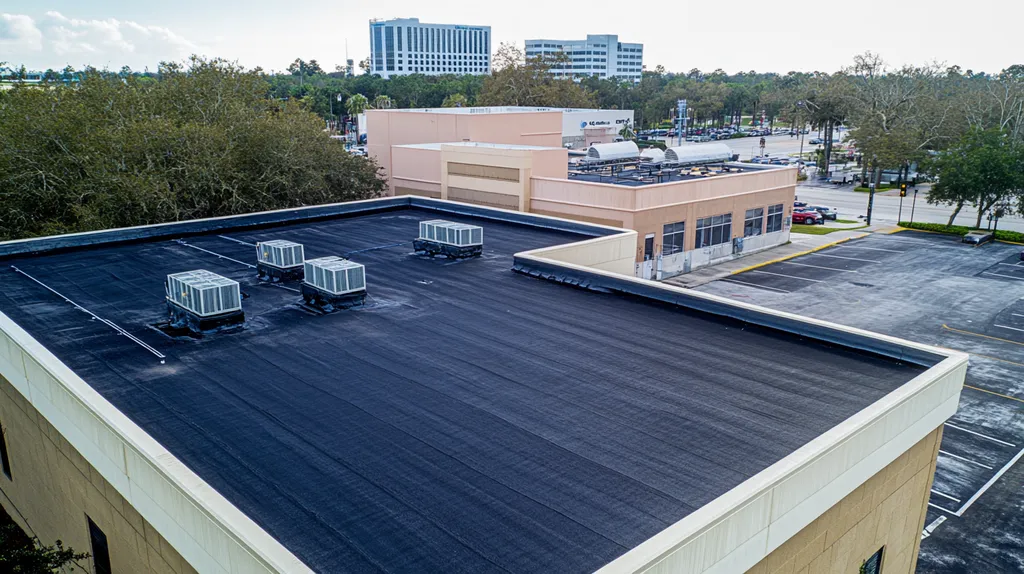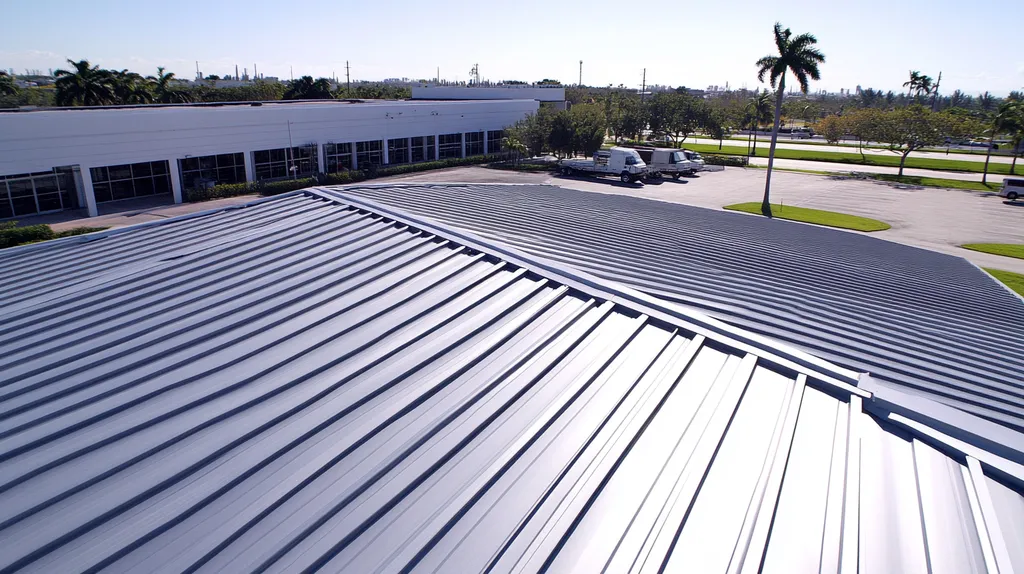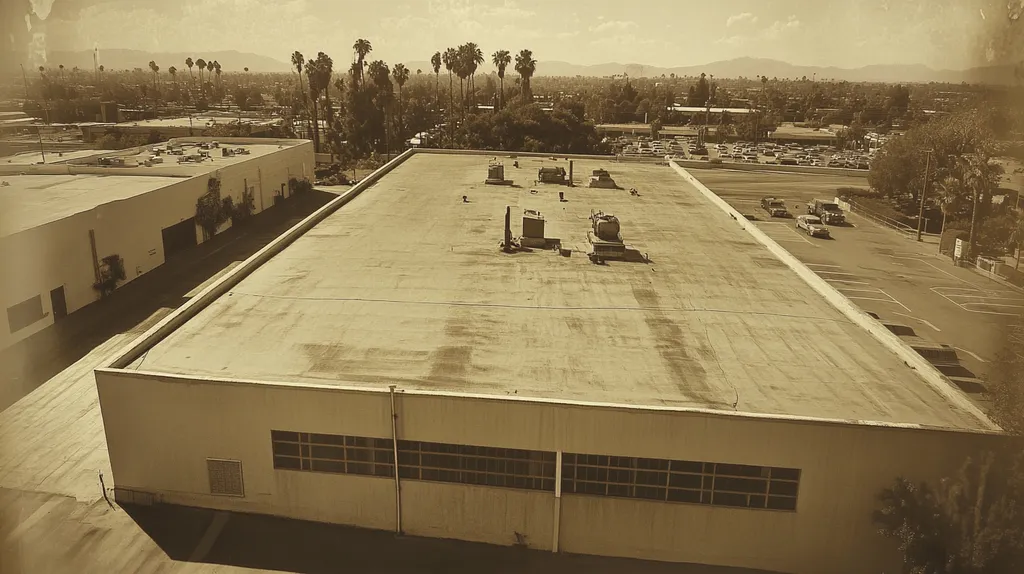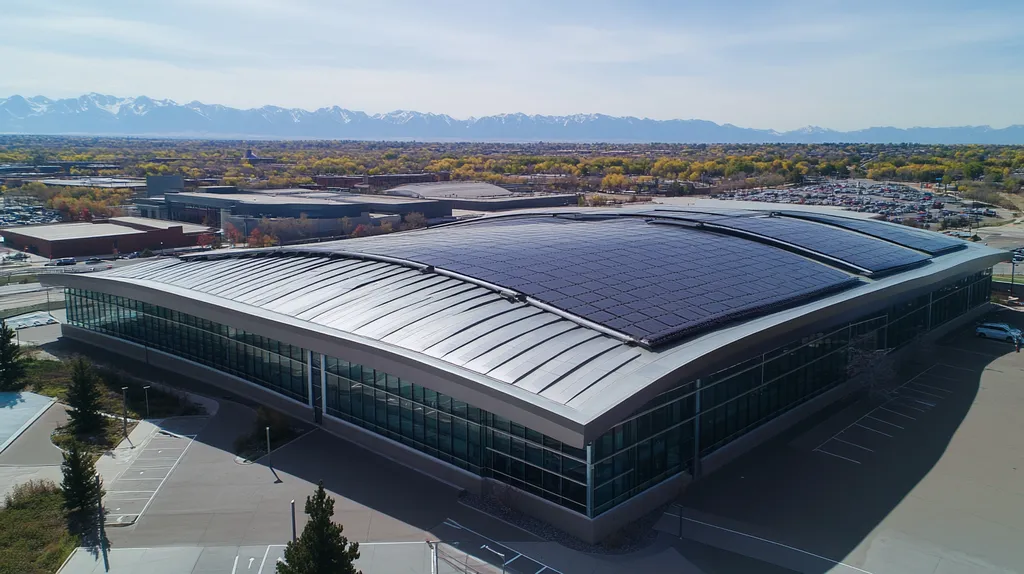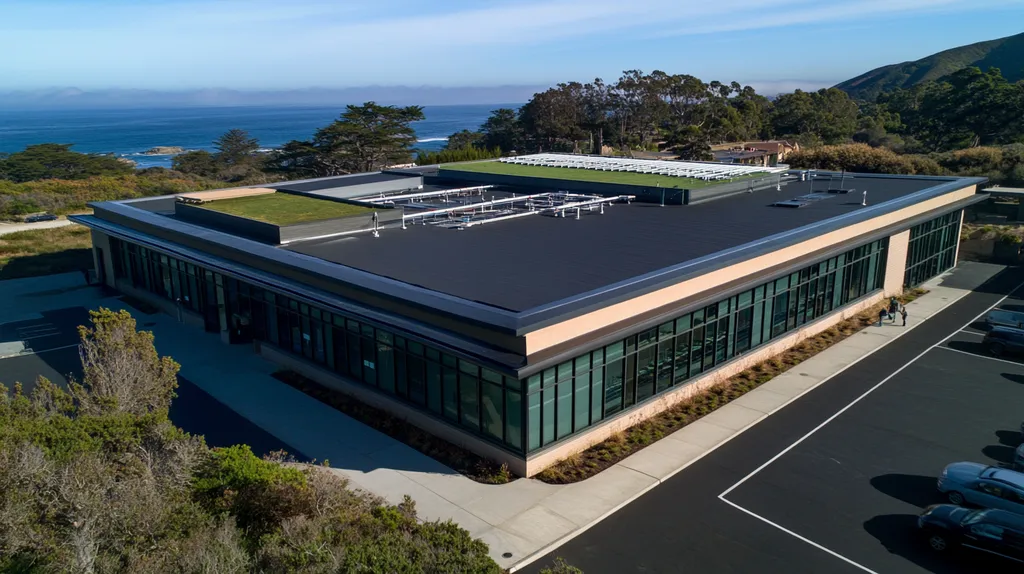Welcome to today’s Battle Royale featuring two roofing heavyweights: “Polyurethane” in the east corner versus “Silicone” in the west!
Tonight’s showdown pits these contenders against each other across six punishing rounds designed to test every aspect of their performance for Commercial Roof Coatings.
At stake? Millions in potential costs, decades of building protection, and the critical performance demands of modern commercial and industrial facilities.
Our professional judging panel will evaluate each round on technical merit, real-world performance, and value delivery. After all six rounds, we’ll declare our ultimate champion.
Ladies and gentlemen, facility managers and building owners… it’s time to rumble!
ROUND 1: INITIAL COSTS & INSTALLATION
When a commercial roof coating fails prematurely, the consequences can be devastating – from structural damage to business interruptions that cost thousands per day. Making an informed choice between polyurethane and silicone coatings isn’t just about price tags – it’s about protecting your investment and avoiding costly mistakes that could impact your bottom line for years to come.
Material Expenses
Understanding coating material costs requires looking beyond the price per gallon. While polyurethane typically costs 15-25% less upfront than silicone, the coverage rates and mil thickness requirements can significantly impact the total project cost.
Polyurethane coatings often require multiple layers and a base coat, which can offset their lower per-gallon cost. Additionally, their performance can vary significantly based on environmental conditions, potentially requiring more frequent reapplication in harsh environments.
Silicone coatings generally command premium pricing but typically require fewer layers and no base coat. They also demonstrate superior UV resistance and weathering properties, particularly in challenging environments.
Given the total material requirements and coverage considerations, polyurethane’s lower upfront cost gives it an ADVANTAGE in this category, though the gap narrows when considering coverage rates.
Installation Complexity
The application process dramatically impacts both labor costs and project success rates. Polyurethane coatings demand precise environmental conditions during application, including strict temperature and humidity controls that can limit installation windows.
Most polyurethane systems require multiple coats with specific cure times between applications. This complexity increases the risk of installation errors and extends the overall project timeline.
AkzoNobel’s research into coating technologies demonstrates how environmental conditions significantly impact installation success, particularly in coastal regions where humidity and salt exposure create additional challenges. (source: Roofers Coffee Shop)
Silicone coatings offer simpler single-coat applications with more forgiving installation parameters. Their moisture-curing properties allow for application in a broader range of conditions, reducing complexity and potential failure points.
Due to its more straightforward application process and wider installation window, silicone earns the ADVANTAGE in installation complexity.
Project Timeline
Time is money in commercial roofing, with each day of installation potentially disrupting business operations. Polyurethane systems typically require 24-48 hours between coats, with complete cure times extending up to a week under ideal conditions.
Weather delays can significantly extend polyurethane installation timelines, as application must occur within specific temperature and humidity ranges. This sensitivity to conditions often leads to unexpected schedule extensions.
Silicone coatings can usually be completed in a single day, with touch-dry times as short as 1-2 hours. Their moisture-curing properties allow work to continue in less-than-ideal conditions, providing more predictable project timelines.
The faster installation and more reliable scheduling make silicone the clear ADVANTAGE holder for project timelines.
ROUND 1 WINNER: SILICONE COATINGS
ROUND 2: DURABILITY & LIFESPAN
When commercial roof coatings fail, the costs can spiral far beyond simple repairs. Water infiltration can damage inventory, disrupt operations, and compromise structural integrity. Making the wrong coating choice today could mean facing extensive damage and premature replacement in just a few years, turning what should be a 15-20 year investment into a recurring nightmare.
Impact of Environmental Conditions
Environmental stresses create the ultimate test for any roof coating system. UV radiation, temperature swings, and moisture exposure work constantly to break down protective barriers, with failures often starting microscopically before becoming visible catastrophes.
Polyurethane coatings demonstrate exceptional resistance to UV degradation and maintain their physical properties even under extreme temperature fluctuations. Their molecular structure provides superior protection against thermal shock and oxidation, particularly in areas with dramatic seasonal changes.
Silicone coatings excel specifically in moisture resistance, with their unique chemistry creating a water-repellent barrier that maintains effectiveness even under ponding conditions. However, they can show reduced performance when exposed to prolonged high temperatures and intense UV radiation.
Given polyurethane’s broader resistance to multiple environmental factors, it claims the ADVANTAGE in this category.
Wear and Tear Resistance
Daily wear and tear can quickly compromise a coating’s protective capabilities. From maintenance foot traffic to falling debris, commercial roofs face constant physical challenges that test coating durability.
Polyurethane coatings feature outstanding tensile strength and abrasion resistance. Their tough exterior layer maintains integrity even under regular foot traffic and mechanical stress, while their flexibility allows them to accommodate building movement without cracking.
Silicone coatings typically show lower resistance to physical abuse. While they offer excellent elasticity, their softer surface can be more susceptible to punctures and tears, particularly in high-traffic areas or locations with frequent maintenance requirements.
With superior resistance to physical damage and abrasion, polyurethane earns the ADVANTAGE in wear and tear performance.
Longevity and Maintenance
A coating’s true value emerges through its ability to maintain performance over time. The best systems minimize maintenance requirements while maximizing protection throughout their service life.
Polyurethane coatings typically deliver 15-20 years of reliable service when properly maintained. Their robust chemical structure resists degradation, and their superior adhesion helps prevent delamination and peeling even after years of exposure.
Silicone coatings generally provide 10-15 years of service life. While they maintain excellent water resistance throughout their lifespan, they tend to accumulate dirt and may require more frequent cleaning to maintain reflective properties.
The extended service life and reduced maintenance requirements give polyurethane the clear ADVANTAGE in longevity.
ROUND 2 WINNER: Polyurethane Coatings
ROUND 3: PERFORMANCE FACTORS
When commercial roof coatings fail to perform as expected, the consequences ripple through an entire facility. A single point of failure can lead to extensive water damage, increased energy costs, and disrupted operations. Understanding performance factors isn’t just about technical specifications – it’s about protecting millions in assets and ensuring business continuity.
UV Resistance
Ultraviolet radiation represents one of the most aggressive enemies of roof coating longevity. In regions with intense sun exposure, UV damage can reduce a coating’s effectiveness by up to 50% within just three years if the wrong system is selected.
Polyurethane coatings incorporate advanced UV stabilizers and chemical structures that actively resist degradation. Their molecular composition maintains structural integrity even after years of continuous sun exposure, preserving both protective and reflective properties.
Silicone coatings provide initial UV protection but can show signs of chalking and surface degradation over time. While they maintain their waterproofing capabilities, their reflective properties may diminish more quickly than polyurethane systems.
With superior long-term UV stability and maintained performance, polyurethane claims the ADVANTAGE in UV resistance.
Adhesion
Poor adhesion accounts for nearly 30% of premature coating failures. When a coating separates from the substrate, it creates entry points for moisture and accelerates system deterioration.
Polyurethane coatings create strong chemical bonds with properly prepared surfaces. Their molecular structure permits deep penetration into substrate pores, resulting in exceptional adhesion strength that resists delamination even under severe weather conditions.
Silicone coatings rely primarily on surface adhesion and can be more susceptible to separation, especially in areas with high thermal cycling. While they offer good initial adhesion, long-term bond strength may decrease over time.
Based on superior chemical bonding and long-term adhesion stability, polyurethane earns the ADVANTAGE.
Surface Compatibility
AkzoNobel’s research into coating technologies demonstrates how substrate compatibility significantly impacts long-term performance, with proper material matching being crucial for optimal results. (source: Roofers Coffee Shop)
Polyurethane coatings demonstrate exceptional versatility across multiple substrate types. Their chemical composition allows them to form strong bonds with metal, concrete, modified bitumen, and most existing roof coatings when properly prepared.
Silicone coatings show limitations with certain substrates and may require special primers or surface treatments. Their compatibility challenges can increase installation complexity and potentially impact long-term performance.
Given its broader application range and fewer substrate limitations, polyurethane takes the ADVANTAGE in surface compatibility.
ROUND 3 WINNER: Polyurethane Coatings
ROUND 4: MAINTENANCE REQUIREMENTS
Every commercial roof coating represents a significant investment that can either protect or compromise a facility’s operations. Poor maintenance choices lead to premature failures, causing disruptions that cost businesses an average of $5,000 per day in lost productivity and repairs. Understanding the maintenance requirements of different coating systems isn’t just about scheduling inspections – it’s about protecting your facility’s entire operational framework.
Maintenance Frequency and Ease
Regular maintenance inspections form the backbone of any successful roof coating system. Polyurethane coatings typically require bi-annual professional inspections due to their complex chemical structure and potential for hidden degradation.
These coatings demand specialized knowledge for proper assessment, as early signs of failure may not be immediately visible to untrained eyes. When issues are identified, repairs often require specific temperature and humidity conditions, limiting maintenance windows.
Silicone coatings offer more straightforward maintenance protocols, with many issues being visible during routine walkthrough inspections. Their simple molecular structure makes problems easier to spot and address, often allowing in-house maintenance teams to handle basic repairs.
The easier inspection process and simpler maintenance requirements give silicone coatings the ADVANTAGE in this category.
Repair Options and Durability
When damage occurs, the speed and effectiveness of repairs directly impact a facility’s protection. Polyurethane repairs require careful surface preparation and often need factory-matched materials to maintain system integrity.
The complexity of polyurethane chemistry means repairs must be performed by certified professionals, potentially leading to longer response times. Additionally, the coating’s sensitivity to environmental conditions can restrict repair timing.
Silicone coatings excel in repair flexibility, accepting new material readily even years after initial application. Their moisture-curing properties allow repairs in various weather conditions, and their single-component nature simplifies the repair process.
Given its superior repair flexibility and shorter response times, silicone earns the ADVANTAGE in repair options.
Long-term Performance and Condition Monitoring
Tracking coating performance over time requires systematic monitoring and documentation. Polyurethane systems need sophisticated inspection protocols to detect early signs of failure, as deterioration often begins beneath the surface.
While polyurethane coatings maintain excellent physical properties, their complex failure modes can make condition assessment challenging. This complexity can lead to overlooked issues during routine inspections.
Silicone coatings provide clear visual indicators of wear and aging, making condition assessment more straightforward. Their predictable weathering patterns allow maintenance teams to plan interventions proactively, reducing the risk of unexpected failures.
The superior ease of monitoring and predictable wear patterns give silicone the ADVANTAGE in this category.
ROUND 4 WINNER: SILICONE COATINGS
ROUND 5: SUSTAINABILITY CREDENTIALS
As environmental regulations tighten and energy costs soar, choosing the wrong roof coating can leave facility owners facing hefty fines and skyrocketing utility bills. Modern sustainability requirements go far beyond simple “green” marketing – they directly impact operational costs, building certification status, and even insurance premiums. Understanding the environmental impact of coating choices has become as critical as understanding their protective properties.
Environmental Impact
The environmental footprint of roof coatings extends from manufacturing through disposal. Polyurethane coatings typically contain higher levels of volatile organic compounds (VOCs) and require energy-intensive manufacturing processes that generate significant carbon emissions.
These coatings often require multiple layers during application, increasing both material consumption and environmental impact. Their chemical composition can also make them potentially hazardous during removal and disposal.
Silicone coatings feature lower VOC emissions and simpler manufacturing processes. Their single-coat application reduces material usage, while their inert chemical nature minimizes environmental hazards during installation and removal.
Given their reduced environmental impact across the product lifecycle, silicone coatings claim the ADVANTAGE in this category.
Energy Efficiency
Roofers Coffee Shop’s analysis of coating performance demonstrates how UV radiation, heat, and moisture create a complex weathering environment that directly impacts energy efficiency. Understanding these interactions is crucial for maximizing building performance. (source: Roofers Coffee Shop)
Polyurethane coatings can achieve high initial solar reflectance values but often experience significant degradation over time. This deterioration reduces their energy-saving potential and may require more frequent recoating to maintain optimal performance.
Silicone coatings maintain their reflective properties longer, with minimal degradation even after years of UV exposure. Their stable performance delivers more consistent energy savings throughout their service life.
The superior long-term reflective stability gives silicone coatings the ADVANTAGE in energy efficiency.
Material Lifecycle
The complete lifecycle impact of roofing materials has become a critical factor in sustainable building operations. Polyurethane coatings present significant end-of-life challenges, as they cannot be effectively recycled and often require special disposal procedures.
Their complex chemical structure makes them difficult to break down or repurpose, contributing to landfill accumulation. Additionally, their shorter service life means more frequent replacement and disposal cycles.
Silicone coatings offer superior recyclability and can often be recoated rather than removed entirely. Their simpler chemical composition allows for easier processing at end-of-life, while their longer service life reduces replacement frequency.
Based on superior lifecycle sustainability, silicone earns the ADVANTAGE in this category.
ROUND 5 WINNER: Silicone Coatings
ROUND 6: SPECIALIZED APPLICATIONS
When specialized commercial roofing applications fail, the consequences extend far beyond simple repairs. From food processing facilities requiring strict sanitation to data centers demanding perfect climate control, choosing the wrong coating can lead to regulatory violations, equipment damage, and operational shutdowns costing up to $50,000 per hour. Understanding how different coatings perform in specialized environments isn’t just about protection – it’s about maintaining critical business functions.
Chemical Resistance Requirements
In industrial environments, roof coatings must withstand exposure to harsh chemicals, exhaust emissions, and process byproducts. The wrong choice can lead to rapid degradation, compromising both the coating and the underlying structure.
Polyurethane coatings demonstrate exceptional resistance to chemical exposure, particularly in industrial settings. Their complex molecular structure creates a robust barrier against acids, bases, and organic solvents commonly present in manufacturing environments.
Silicone coatings show limited chemical resistance, particularly to petroleum-based substances and certain industrial solvents. While they excel in other areas, their vulnerability to chemical attack makes them less suitable for facilities with significant chemical exposure.
Given its superior chemical resistance profile, polyurethane claims the ADVANTAGE in this category.
High-Temperature Applications
Modern commercial facilities often house equipment that generates significant heat through rooftop penetrations. This localized thermal stress can cause coating breakdown, leading to system failure around critical areas.
Polyurethane coatings maintain their structural integrity even when exposed to temperatures exceeding 180°F. Their thermal stability prevents softening and degradation around hot equipment exhausts and HVAC systems.
Silicone coatings can become unstable under extreme heat conditions, potentially leading to material flow and reduced protection. Their heat resistance limitations can create vulnerable points around high-temperature penetrations.
The superior thermal stability gives polyurethane the ADVANTAGE in high-temperature applications.
Clean Room and Sensitive Environments
Facilities housing sensitive operations require coatings that won’t compromise environmental controls. From pharmaceutical manufacturing to food processing, any coating degradation can introduce contamination risks.
Polyurethane coatings form an exceptionally stable barrier with minimal particle shedding. Their resistance to chalking and surface breakdown makes them ideal for clean room environments where particulate control is critical.
Silicone coatings tend to attract dust and can experience surface degradation that releases particles. This characteristic makes them less suitable for sensitive environments where contamination control is paramount.
The superior particle control and stability give polyurethane the ADVANTAGE in sensitive environments.
ROUND 6 WINNER: Polyurethane Coatings
AND THE WINNER IS…
After six grueling rounds of technical evaluation, we have our verdict…
In a split decision that had our judges working overtime, POLYURETHANE COATINGS emerge as our champion, winning three crucial rounds to silicone’s two, with a decisive edge in durability, performance factors, and specialized applications!
Polyurethane dominated with its superior chemical resistance, exceptional UV stability, and unmatched versatility across different substrates. Its championship performance in handling extreme temperatures and maintaining structural integrity under punishing industrial conditions proved decisive.
But don’t count silicone out! This formidable contender showed impressive prowess in maintenance simplicity, sustainability credentials, and installation ease. For buildings in high-moisture environments or projects requiring rapid deployment, silicone remains a strong contender.
Remember, folks – every building brings its own unique challenges to the ring. Local climate conditions, substrate characteristics, and specific facility requirements can all impact coating performance. While tonight’s match gives us a general framework, property owners should always consult qualified roofing professionals who can evaluate their specific situation.
In the high-stakes arena of commercial roofing, there’s no substitute for matching your facility’s unique requirements with the right coating’s strengths. Choose your champion wisely – because when it comes to protecting your investment, second place isn’t an option!
FREQUENTLY ASKED QUESTIONS
Q. What are the initial costs for commercial roof coatings?
A. Initial costs for commercial roof coatings vary between polyurethane and silicone. Polyurethane is typically less expensive upfront but may require multiple layers, adding to the total cost. Silicone coatings may cost more initially but often need fewer layers, potentially balancing overall expenses and installation complexity.
Q. How does durability affect industrial roof coatings?
A. Durability is crucial for industrial roof coatings as it impacts service life and maintenance. Polyurethane coatings offer superior resistance against environmental stressors like UV radiation and moisture. Meanwhile, silicone coatings perform well in moisture exposure but may experience quicker degradation in extremely hot conditions.
Q. What’s the importance of performance factors in commercial roofs?
A. Performance factors like UV resistance and adhesion are vital for commercial roofs, as they affect longevity and operational efficiency. A coating’s ability to withstand environmental conditions directly correlates with protection against water infiltration, which can threaten inventory and structural integrity.
Q. What maintenance is needed for commercial roof coatings?
A. Maintenance for commercial roof coatings varies by type. Polyurethane coatings typically require professional inspections twice a year to identify hidden issues. Silicone coatings offer easier monitoring, allowing on-site maintenance teams to conduct routine checks and basic repairs without extensive professional oversight.
Q. How do sustainability credentials influence roof choices?
A. Sustainability credentials impact roof choices as environmental regulations grow stricter. Coatings with lower volatile organic compounds and better recyclability can help avoid compliance penalties and improve building certification status. Choosing sustainable options also reflects positively on a facility’s public image and long-term operational costs.
Q. Which coating is better for specialized applications?
A. For specialized applications, polyurethane coatings are often the better choice due to their chemical resistance and thermal stability. These properties are essential in environments with harsh chemicals or high heat, ensuring that the coating protects against contamination and degradation that could disrupt operations.
Q. How does climate affect commercial roof performance?
A. Climate significantly impacts commercial roof performance by influencing material choice and longevity. Areas with extreme temperature changes or heavy rainfall require coatings that can tolerate such variations. Choosing the right coating ensures that it will withstand environmental stressors, protecting the roof and the underlying structure.

